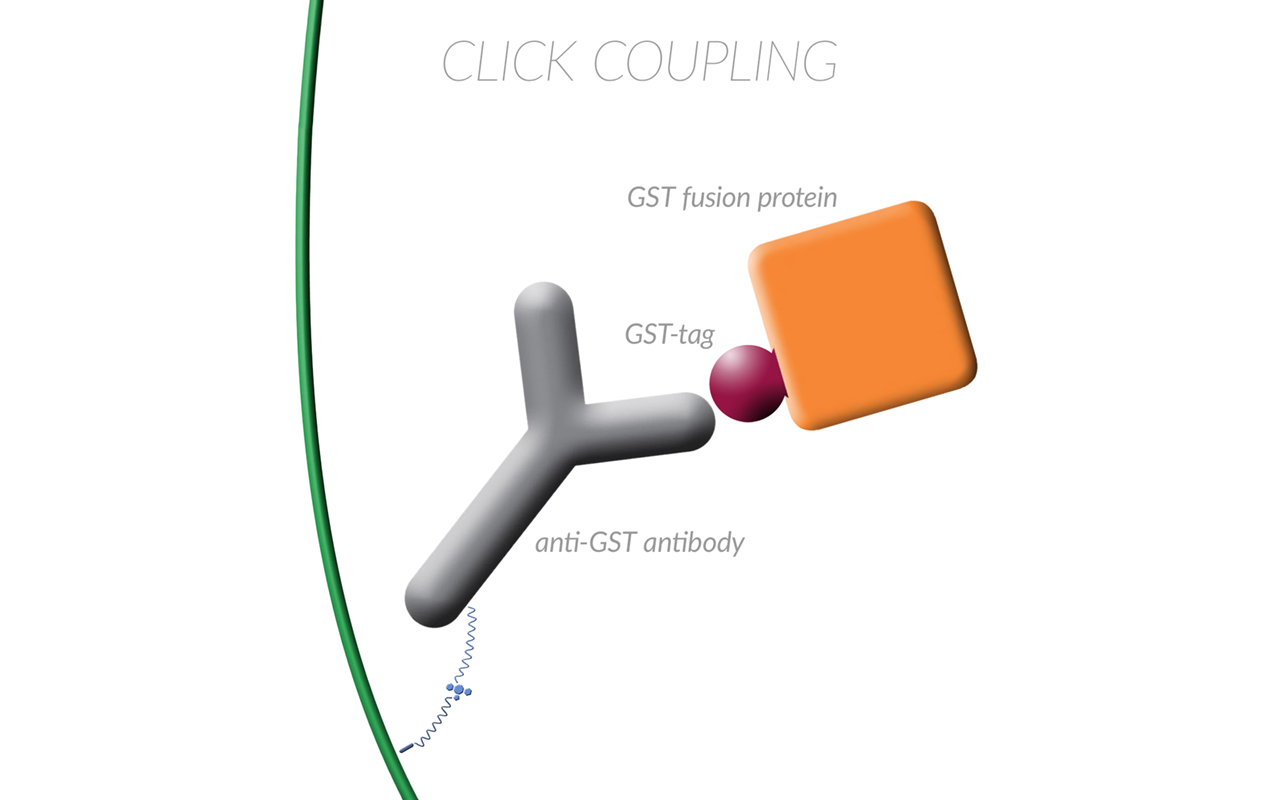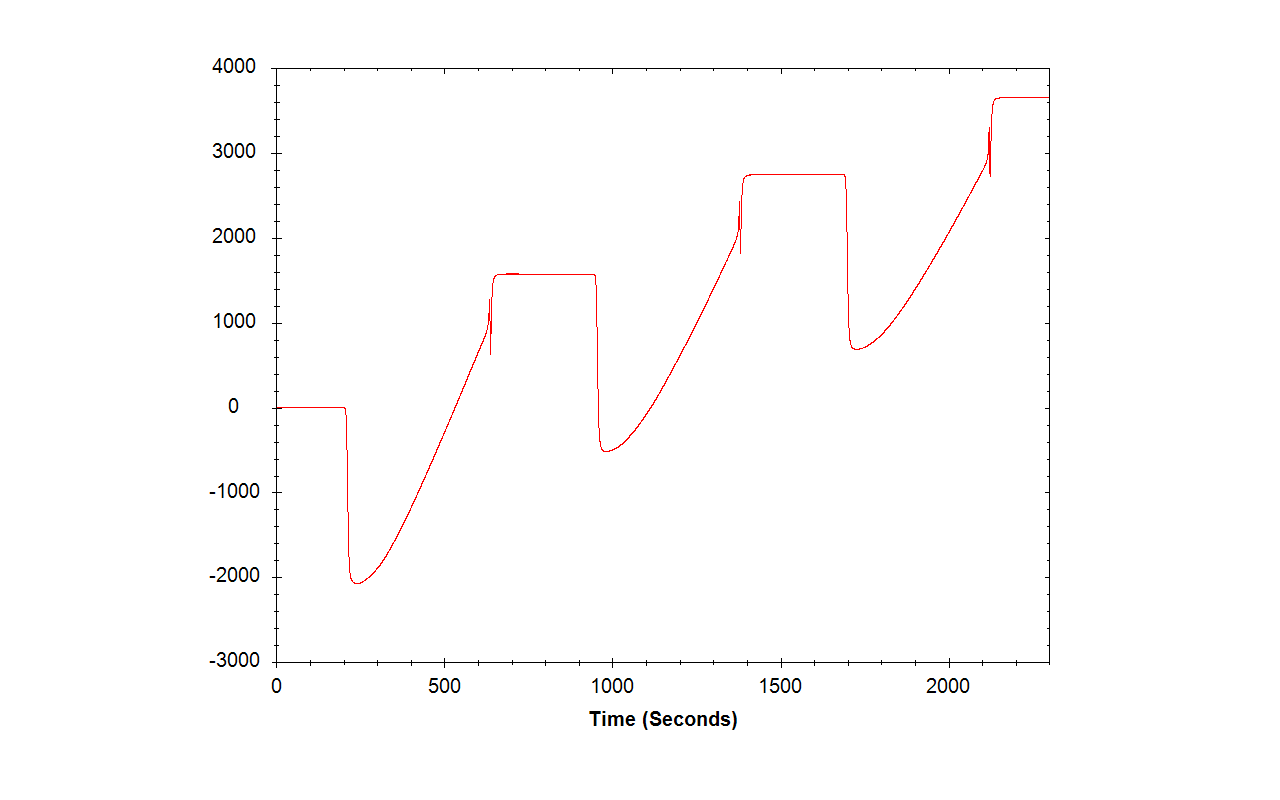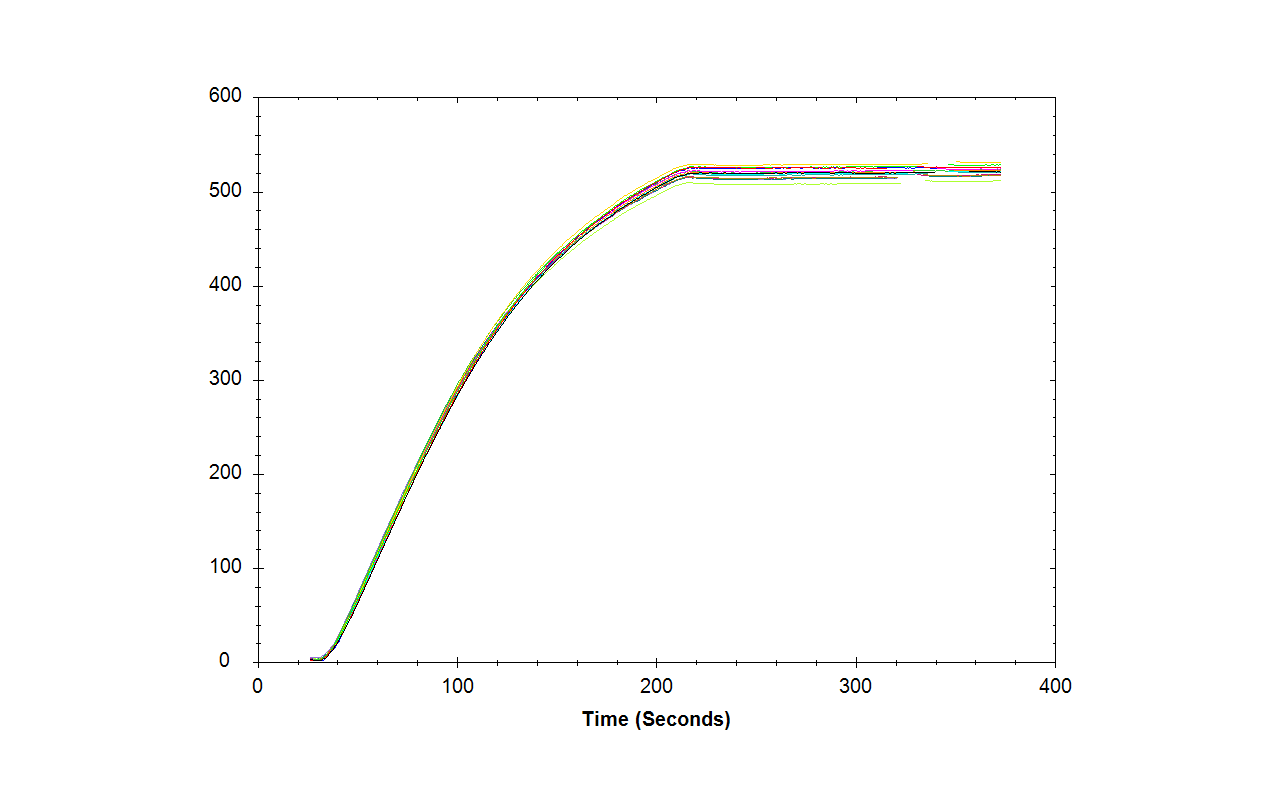Based on our novel and easy-to-use click coupling immobilization technique, XanTec launches a GST (glutathione S-transferase) capture kit for site-specific immobilization of GST fusion proteins to be used in SPR assays.
The core of this kit is a DBCO-prelabeled polyclonal yet highly-specific anti-GST antibody, which can be immobilized via the easy-to-use click coupling technique. Since the antibody is easily regenerable, there is no need to screen regeneration conditions, avoiding damage to the immobilized and possibly sensitive ligand.

Preparing the sensor chip/capture antibody immobilization
The GST capture antibody can be immobilized in different ways.
The simplest and recommended method is immobilization via click coupling. The antibody has a DBCO–PEG4 linker (Fig. 2), which allows direct immobilization on azide-derivatized sensor chips without activation. This one-step procedure is very easy and has significant advantages over traditional coupling techniques (Fig. 3).


Of course, covalent immobilization of the anti-GST antibody via EDC/NHS chemistry is also possible on all carboxyl-functionalized sensor chip surfaces, but with the disadvantages that the immobilization level is difficult to adjust, crosslinking of the hydrogel is possible, and increasing the ligand density later on is impossible.
Alternatively, the capture antibody may be immobilized on Protein A/G sensor chips. However, this type of immobilization could result in increased nonspecific interactions of the sensor chip surface.
Repeatability and stability of ligand immobilization
Especially for capture systems, the repeatability of ligand immobilization is crucial, since often no suitable regeneration buffer is available for the ligand/analyte interaction, or the ligand is too sensitive for regeneration.
Figure 4 demonstrates the repeatability of ligand immobilization via the anti-GST antibody. Note that there is no ligand dissociation. Thus, the baseline is stable and the following interaction cycles are highly reproducible.

XanTec’s GST capture kit in a nutshell
- Site-directed and gentle immobilization of GST fusion proteins for SPR analysis.
- Immobilization of capture antibody via precise & easy-to-use click coupling, or using standard EDC/NHS immobilization chemistry.
- With click coupling no activation is needed.
- With click coupling the antibody immobilization level is easily adjustable – even after the first interaction cycles.
- Simple and multiple regeneration of the capture antibody.
- High reproducibility in repeated ligand immobilization cycles.
- Negligible ligand leaching – practically drift-free.
Content of the GST capture kit
- DBCO-conjugated polyclonal goat anti-GST antibody (affinity-purified) 0.6 mg/mL in PBS, 0.15 M NaCl, 100 μL
- Recombinant GST (Schistosoma japonicum, molecular weight 26 kDa): 0.2 mg/mL in HBSTE buffer (10 mM HEPES, pH 7.4, 0.15 M NaCl, 3 mM EDTA, 0.005% Tween-P20), 100 μL
- Immobilization buffer: 5 mM sodium acetate, pH 5.0, 50 mL
- Regeneration solution: 10 mM glycine-HCl, pH 2.1, 100 mL (2 x 50 mL)
This kit contains material sufficient for up to 20 anti-GST antibody immobilizations and 800 regenerations.*
The GST capture kit is available from June 2020.
On the basis of our versatile click coupling approach, XanTec will launch further capture kits. To take advantage of this simple immobilization technique, we offer a click coupling labeling kit (# K DCL-3), which allows users to easily immobilize individual protein ligands on our azide-derivatized sensor chips.
Check this link for further information on our click coupling products.
* Dependent on the SPR instrument used (calculated for Biacore® and Reichert SPR systems).
Biacore® is a trademark of Global Life Sciences Solutions USA LLC.